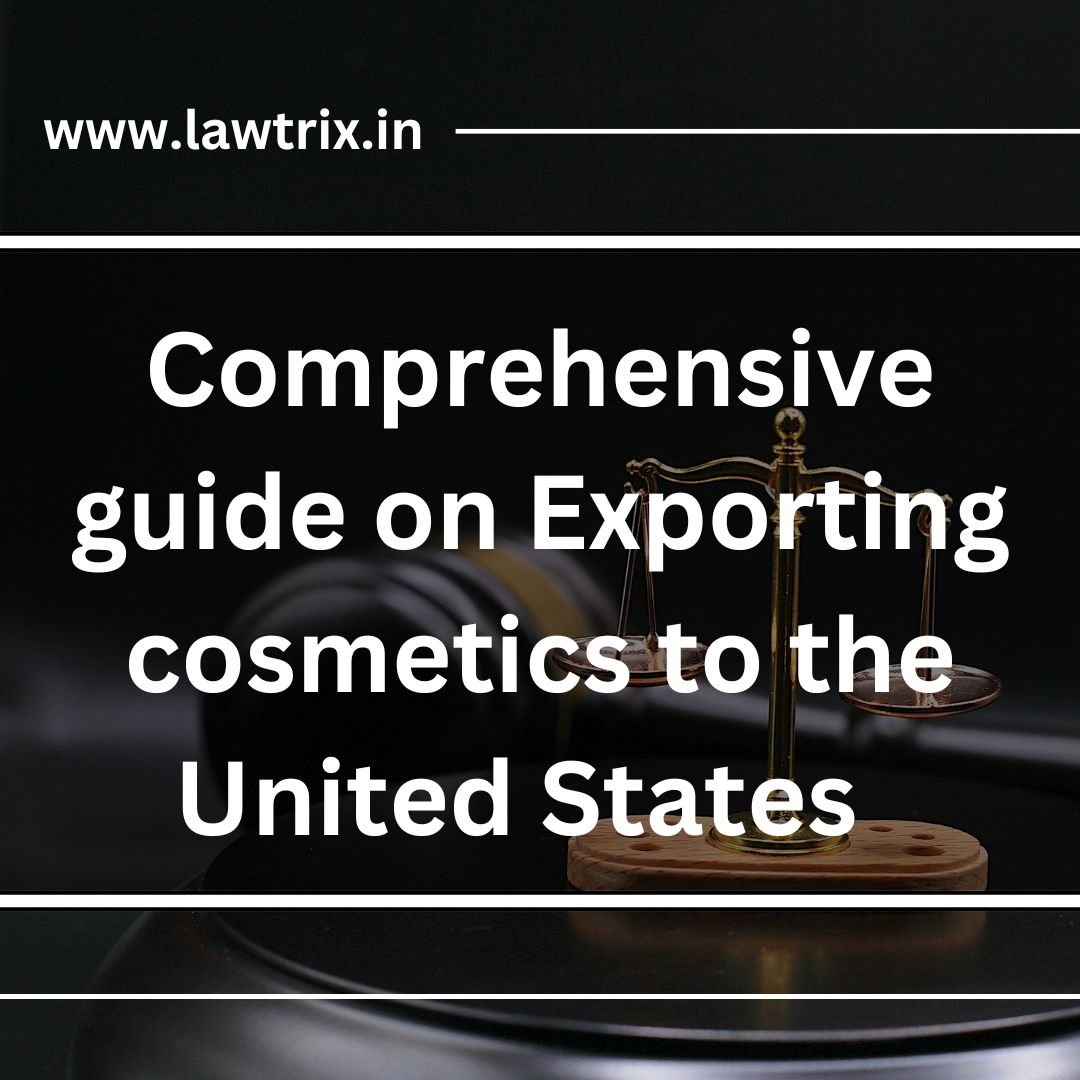Comprehensive guide on Exporting cosmetics to the United State
Exporting
cosmetics to the United States involves navigating several regulations and
requirements to ensure compliance with the U.S. Food and Drug Administration
(FDA), customs, labeling standards, and more. Here’s a comprehensive guide on
what is typically required:
1. Understanding FDA Regulations
- FDA’s
Authority:
The FDA regulates cosmetics under the Federal Food, Drug, and Cosmetic Act
(FD&C Act) and the Fair Packaging and Labeling Act (FPLA). Although
cosmetics do not require FDA pre-approval, they must be safe for consumers
and properly labeled.
- Voluntary
Cosmetic Registration Program (VCRP): While not mandatory, it’s advisable to participate in
the FDA’s VCRP to list ingredients and products. This registration helps
with transparency but does not imply FDA endorsement.
2. Product Safety and Compliance
- Safety
Standards:
All cosmetic products sold in the U.S. must be safe for their intended use
and not misbranded or adulterated. Companies are responsible for ensuring
product safety through their own testing, as the FDA does not test cosmetics.
- Prohibited
Ingredients:
Certain ingredients, such as chloroform and certain color additives, are
banned in the U.S. Always review the FDA’s list of prohibited ingredients
to ensure compliance.
- Ingredient
Disclosure:
All ingredients must be disclosed on the product’s label in descending
order of predominance.
3. Labeling Requirements
- Principal
Display Panel (PDP):
The front label should prominently display the product name, intended use
(if not obvious), and net quantity of contents.
- Ingredients
Panel: On
the back label or another prominent location, list all ingredients using
their INCI (International Nomenclature of Cosmetic Ingredients) names.
- Warnings
and Directions:
Include necessary warnings (e.g., "For external use only") and
directions for safe use.
- Manufacturer
Information:
Include the name and address of the manufacturer, packer, or distributor.
For foreign companies, an importer’s or distributor’s address in the U.S.
may be used.
- Country
of Origin:
The label must state the product’s country of origin, such as “Made in
[Country].”
4. Customs and Import Requirements
- U.S.
Customs and Border Protection (CBP): CBP requires that all imported cosmetics comply with
FDA regulations. To facilitate entry, importers should provide:
- Properly
labeled goods with the FDA-required information.
- An
entry summary with details about the product’s value, classification, and
origin.
- Harmonized
Tariff Schedule (HTS) Code: Classify the product under the correct HTS code to
determine the duty rate. Cosmetic products often fall under codes
beginning with 3303-3307.
- Registration
of Facility:
While not mandatory for cosmetics, some facilities choose to register with
the FDA as a voluntary step to streamline imports.
5. Cosmetic Claims and Advertising Standards
- Avoid
Misleading Claims:
Claims suggesting that the product treats or cures a disease may cause it
to be classified as a drug, which has stricter regulations. Avoid terms
like “healing,” “anti-aging,” or “acne treatment” unless you are prepared
to meet the requirements for drug classification.
- Marketing
Claims:
Stick to cosmetic claims such as “moisturizes,” “cleanses,” or “improves
appearance,” which are generally acceptable under cosmetic definitions.
6. Engaging a U.S. Importer or
Distributor
- Import
Partner:
Partnering with a licensed importer can ease the entry process, as they
handle customs clearance and liaise with CBP and FDA.
- Distributor
Agreement:
If planning to use a U.S.-based distributor, ensure the agreement includes
terms for compliance, labeling, and recalls, if necessary.
7. Taxes and Duties
- Customs
Duties:
Cosmetic products are subject to customs duties, which vary by product
type and ingredients. Rates can be found under the HTS code
classification.
- Tariffs: Additional tariffs may apply
to certain countries or materials due to trade policies. Be aware of any
tariffs related to your country of origin or material.
8. Packaging Standards
- Packaging
Materials:
Be mindful of packaging standards for the U.S. market. Avoid certain
plastics or materials if environmental standards apply.
- Labeling
Language:
All labeling must be in English. If you include additional languages, make
sure they do not interfere with the prominence of English labeling.
9. Additional Certifications and
Standards (Optional)
- USDA
Organic Certification:
If your product contains organic ingredients and you want to market it as
such, consider USDA Organic certification.
- Leaping
Bunny or Cruelty-Free Certification: For brands that are cruelty-free, certifications such
as Leaping Bunny or PETA’s cruelty-free label can appeal to U.S.
consumers.
- Good
Manufacturing Practices (GMP): While not mandatory, GMP certification can be a
strong quality assurance point.
10. Testing and Quality Assurance
- Microbial
and Stability Testing:
Conduct stability and microbial testing to ensure product safety and shelf
life, particularly for high-risk products like creams, lotions, and
products used near the eyes.
- Heavy
Metal and Allergen Testing: Check for heavy metals or known allergens to meet
safety expectations and avoid recalls.
11. Logistics and Distribution
- Choosing
Warehousing and Distribution Centers: Use distribution centers in key locations (such as
Los Angeles or New York) to reduce shipping times and meet local demands.
- E-Commerce
Considerations:
If selling directly to consumers, ensure your fulfillment process complies
with U.S. postal and shipping requirements.
12. Post-Market Surveillance and
Reporting
- Adverse
Event Reporting:
If consumers report adverse effects (e.g., rashes, irritation), you must
have a process for tracking and responding to these complaints.
- Product
Recalls:
Establish a recall process if safety issues are identified. The FDA may
issue a recall request, so having an organized plan is crucial.


